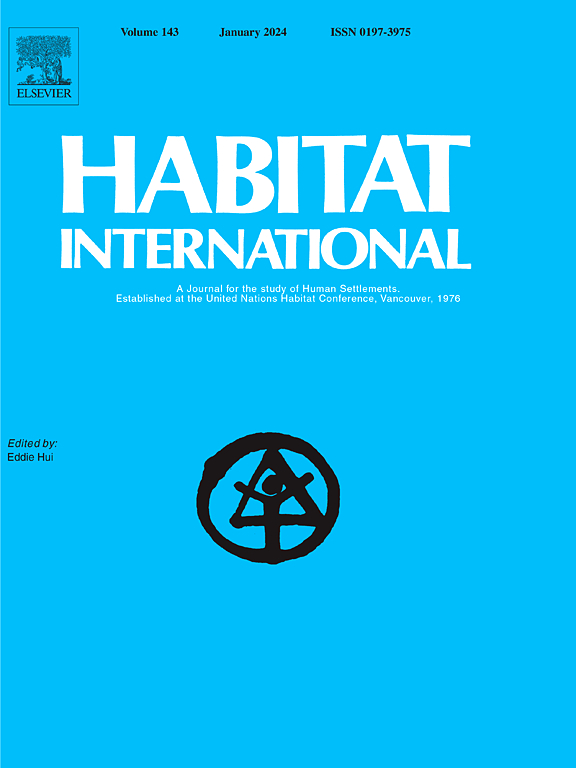Defining spatial justice: A review
IF 6.5
1区 经济学
Q1 DEVELOPMENT STUDIES
引用次数: 0
Abstract
Over the past six decades and more seriously since the global recession in 2008, the concept of spatial justice (SJ) has been addressed in rural, urban, and regional studies and processes, leading to the preparation of plans in various fields and disciplines around the world. However, this concept is disputed due to paradigmatic differences and the proliferation of concepts presented. This article aims to clarify the conceptual ambiguities surrounding SJ and extract its defining categories regardless of existing intellectual paradigms. More precisely, this paper wants to understand the common concepts of SJ definitions to provide an integrated definition for it. For this purpose, the present study was methodically extracted using a systematic review and coded with a qualitative content analysis. The results reveal seven underlying categories of SJ under the headings of “participation”, “power and governance”, “diversity and plurality”, “equality”, “access”, “equity” and “fairness”. Combining these categories and their sub-categories forms an integrated definition that can be considered the main basis for the efficiency of theories, policies, and future planning. Also, a deeper understanding of SJ formative categories can be achieved by linking this new definition with intellectual paradigms and spatial planning theories.
空间正义的定义:综述
在过去的60年里,尤其是自2008年全球经济衰退以来,空间正义的概念在农村、城市和区域的研究和过程中得到了解决,导致世界各地不同领域和学科的规划编制。然而,由于范式差异和概念的扩散,这一概念存在争议。本文旨在澄清围绕SJ的概念歧义,并提取其定义类别,而不考虑现有的知识范式。更确切地说,本文希望了解SJ定义的常见概念,为其提供一个完整的定义。为此目的,本研究采用系统综述的方法进行了系统的提取,并用定性内容分析进行了编码。结果揭示了SJ的七个基本类别,分别是“参与”、“权力与治理”、“多样性与多元性”、“平等”、“获取”、“公平”和“公平”。将这些类别及其子类别结合起来,形成一个完整的定义,可以被认为是理论、政策和未来规划效率的主要基础。此外,通过将这一新定义与智力范式和空间规划理论联系起来,可以更深入地理解SJ的形成类别。
本文章由计算机程序翻译,如有差异,请以英文原文为准。
求助全文
约1分钟内获得全文
求助全文
来源期刊

Habitat International
Multiple-
CiteScore
10.50
自引率
10.30%
发文量
151
审稿时长
38 days
期刊介绍:
Habitat International is dedicated to the study of urban and rural human settlements: their planning, design, production and management. Its main focus is on urbanisation in its broadest sense in the developing world. However, increasingly the interrelationships and linkages between cities and towns in the developing and developed worlds are becoming apparent and solutions to the problems that result are urgently required. The economic, social, technological and political systems of the world are intertwined and changes in one region almost always affect other regions.
 求助内容:
求助内容: 应助结果提醒方式:
应助结果提醒方式:


